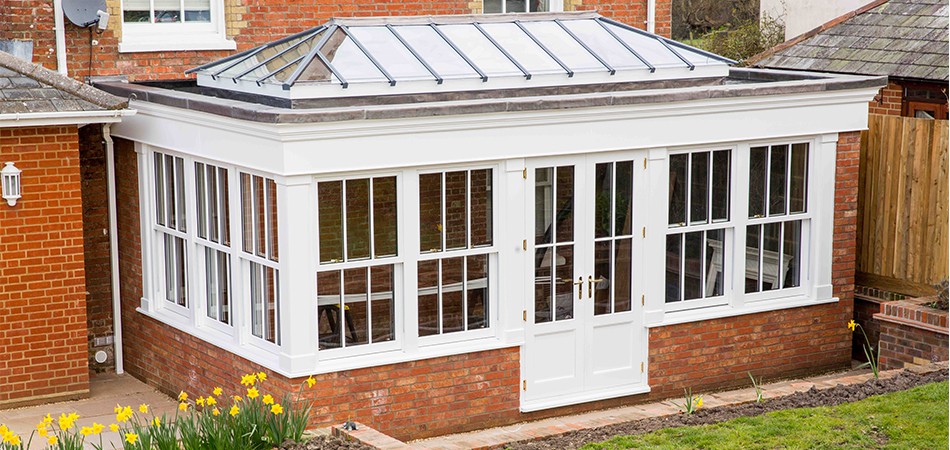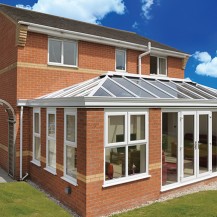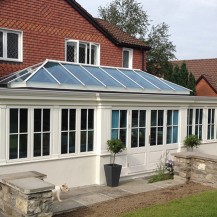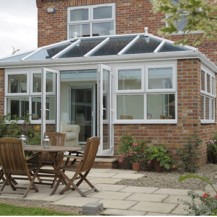Search for an Orangery installer near you
Orangeries
Originally designed in the 17th and 18th century as a temporary structure to house citrus fruits in the winter, orangeries soon became a symbol of wealth and were a popular addition to grand homes in the Georgian period. Traditionally, the design was characterised by large windows and a combination of brick and stonewalls with either a flat roof or multiple roof lanterns. Today, unlike conservatories, a modern orangery is built with glass walls and has side elevations partly constructed with hard wood (engineered timber), Oak or stone.
 New Forest Orangery
New Forest Orangery
Benefits of an Orangery
Privacy
The inclusion of brick pillars means that an orangery can offer more privacy than a conservatory and they can be much easier to heat in the winter. The combination of brick and glass also helps to match the existing character of any home.
Multi-Purpose Living
As orangeries tend to be constructed using brick, they look and act like an extension of your home and provide a multi-purpose living space that can be used as anything from a kitchen and dining room, to a living area. An orangery is a practical choice when looking to add style, space and functionality to a home. When coupled with bi-fold doors, orangeries can also help to increase the amount of natural light into your home, whilst offering an outlook onto your garden.
Design & Style
Orangeries can be designed in a variety of shapes from Victorian, Georgian, Lean-to and Gable. To further enhance your orangery, the addition of downlights and speakers built into the roof offer the opportunity to create a truly bespoke living space, and decorative gutter fascia’s can also be included to provide external details.
- DGCOS Achieves ISO 9001 Recertification Read More …
- Double Win for DGCOS Member Radcliffe Glass & Windows at 2025 GGP Installer Awards Read More …
- 2025 DGCOS Installer Newsletter Out Now Read More …
I am very pleased with the service we have received from DGCOS.
Andrew Gledhill


